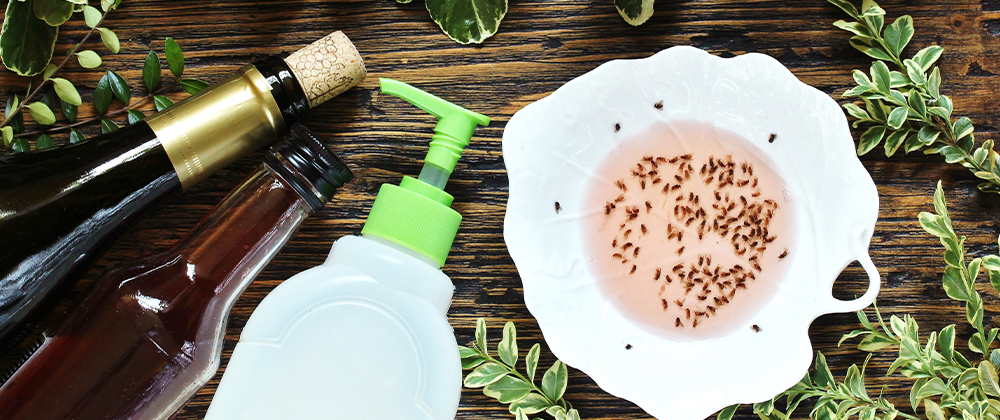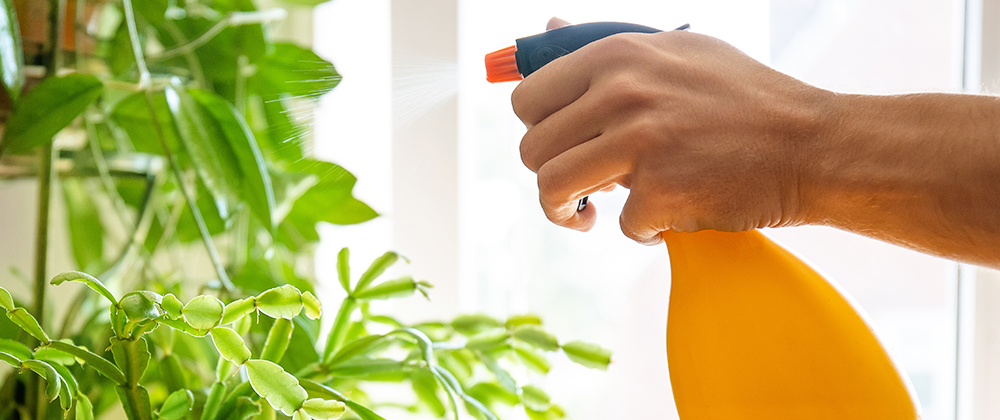How to Get Rid of Black Fly in Houseplants
As people who adore plants, we never want to see them suffer at the hand of pests. But we especially don't want to see pests in our houseplants, because that brings the problem inside our homes—gross! Fungus gnats are nasty little winged critters that resemble tiny mosquitoes and are similar in size to fruit flies. The good news is that these plant flies are much less damaging than many other pests, and better yet, they're pretty easy to get rid of.
What are Fungus Gnats?
Fungus gnats are identifiable by their long legs, transparent wings, and affinity for nutrient-rich, moist soils. You might notice these tiny flies buzzing around plant containers, but you won't see them munching on the plant's foliage directly, like some more harmful pests do. You will, however, notice them in the soil, feasting on plant root hairs and other organic matter. Make no mistake—if left untreated, these bugs can still cause a considerable amount of damage.
While adult fungus gnats only have a life span of about a week, they can make a pretty significant impact in that short period, laying up to 300 eggs in the right conditions. With this fast turnaround and short life cycle lasting just 3-4 weeks, populations can skyrocket pretty quickly.
Signs of Fungus Gnats
If your plant has a fungus gnat problem, it's pretty easy to identify. These plant flies aren't actually great at flying, so they tend to stay pretty close to the plant. You'll probably notice them whizzing about in zig-zag movements. Since they have such a quick reproduction rate, it's common to see all the different stages of this pest at once. If you gently stir around the soil, you'll likely see some bugs still in their larval stage. They have transparent bodies and black, shiny heads, and live in the soil where they munch away on organic matter.
With winter upon us here in North Dakota, our plants are getting ready to settle in for the cold season. Unfortunately, that means it's about time for these bothersome bug populations to peak. Dormant plants need less water during this time, meaning their soils stay wet longer. Wet soils, which encourage root rot and fungus, are a breeding ground for gnats. Be careful bringing your tender plants inside to overwinter, as you might be introducing your home to unwanted pests.
If left unnoticed and untreated, your plants will begin to show signs of stress. While fungus gnats don't damage plant leaves directly, they munch on root hairs and diminish the soil of essential nutrients. This can lead to the sudden wilting and yellowing of plant leaves, weak growth, and an overall loss of vigor.

Natural Ways to Get Rid of Gnats
Natural control methods should always be your first step when dealing with any pest. While chemicals are sometimes a necessary second line of defense, natural and organic solutions are usually the least harmful and disruptive to your plant and home. Luckily, most populations of fungus gnats can be prevented and eradicated naturally if they're identified and treated in time. Keep in mind that one plant container can house 3-4 generations of bugs, so multiple applications of your preferred method will likely be necessary. Here's how you can control gnats in your houseplants:
Avoid overwatering. Allow the top few inches of soil to dry out before watering your houseplants. Not only will this prevent fungus gnats from choosing your plant as their ideal new home, but it will also disrupt their reproductive cycle and help to lessen populations that have already moved in.

Use sticky traps. They're not just for mice! Sticky traps are simple solutions to a lot of pest problems. Place them directly on the surface of the soil, and you'll catch gnats that are on the move. Remove them from the trap or dispose of and replace the trap often (every 2-3 days) to intercept their egg-laying. Yellow traps are especially efficient at attracting these insects.
Make cider and vinegar traps.Similar to how you might trap fruit flies, mix equal parts of cider and vinegar in a shallow dish or can. Place the trap near the affected plant or even on the soil surface inside the container. The pests will be attracted to the mixture but will drown after they land in it.
Introduce beneficial nematodes. Adding more bugs to the mix might sound counterproductive, but it's a straightforward solution to controlling pest populations. Nematodes are teeny tiny worm-like bugs, often so small that you can't even see them with your naked eye. They work to penetrate fungus gnats and other insects in their larval stage, releasing a bacteria that ends up consuming the pest from the inside out. It's grim and gross when you think about it, but not as gross as letting gnats kill your precious houseplants!
Dealing with Fungus Gnats in Houseplants
When all else fails, there are always insecticidal products and sprays available to control pest populations. There are plenty of products that target either the larval stage or the adult stage, but either is fine. As long as you effectively target one stage of their life cycle and reapply frequently, you should be able to eradicate these nasty plant flies in just a few weeks.
Hydrogen peroxide is a quick and effective way to get rid of larvae, killing them on contact. Mix four parts water with one part hydrogen peroxide and soak your soil with the solution.

Neem oil can also be diluted with water and applied to the soil to kill larvae. You can also use neem oil as a spray to kill adult flies on contact. Finally, pyrethrin sprays contain extracts that are toxic to many pests and can kill fungus gnat larvae and flies on contact.
Although fungus gnats don't carry diseases that pose a threat to human health, they can impact the health of your houseplants. By keeping pests at bay, your plants will return the favor with a luscious, healthy appearance to brighten your home.
How to Get Rid of Black Fly in Houseplants
Source: https://plantperfect.com/how-to-deal-with-fungus-gnats-on-houseplants/